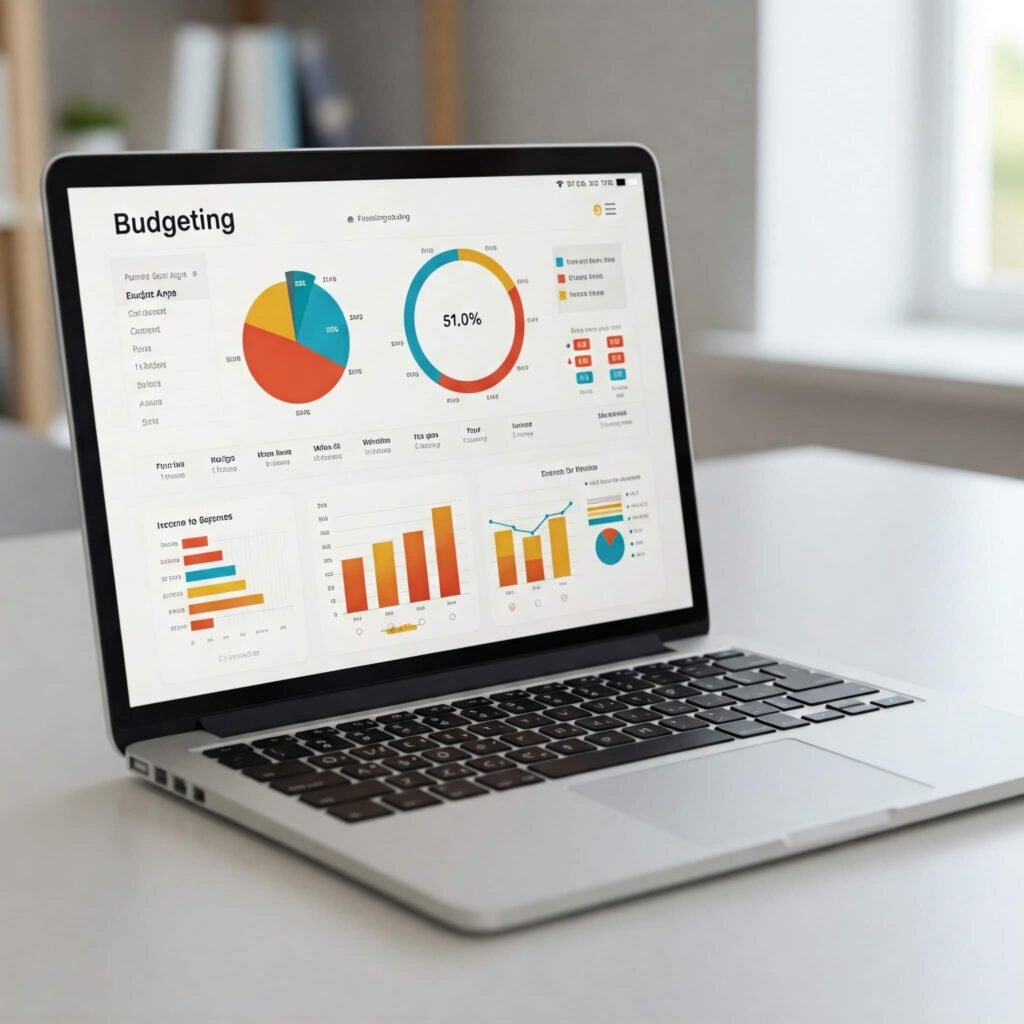Want to create a budget that transforms your finances? Budgeting is easier with tools like YNAB or simple spreadsheets, helping you manage money with confidence. Consequently, this guide shares five actionable steps to make a budget that works for you, packed with insights and budget tips. Let’s dive into financial planning and take charge of your personal finance!
Why Creating a Budget Drives Financial Success
Creating a budget empowers you to control spending and achieve goals. In fact, a 2023 Bankrate survey found 74% of Americans live paycheck to paycheck, often due to poor money management. However, financial planning through budgeting builds savings. Therefore, starting a savings plan now sets you up for long-term personal finance success.
Benefits of Budgeting for Financial Freedom
Budgeting reduces stress and fosters wealth building. For instance, tracking expenses highlights wasteful habits, like frequent takeout. As a result, a well-crafted budget plan creates room for emergency funds, debt repayment, or investments, strengthening your financial planning efforts.
Actionable Takeaway: Review your last month’s expenses to identify one area to cut for your savings plan.
Outbound Reference: Learn about financial struggles at Bankrate.

Step 1: Assess Your Finances to Create a Budget
To make a budget, start by understanding your cash flow. For example, list your monthly income (e.g., salary, side hustles) and expenses (e.g., rent, groceries). This step in budget planning ensures your budget aligns with your reality, making it easier to stick to.
Budget Planning for Income and Expense Tracking
- Calculate Net Income: Include after-tax earnings from all sources.
- List Fixed Expenses: Note rent, utilities, and subscriptions.
- Track Variable Expenses: Monitor groceries, dining, and entertainment.
- Use Tools: Apps like Mint simplify expense tracking for budget tips.
Real-World Example: Lisa, a freelancer, cut $200/month from dining out after tracking expenses, boosting her savings plan.
Outbound Reference: Explore budgeting apps at Forbes.
Step 2: Set Goals to Make a Budget Effective
Budgeting thrives on clear, achievable goals. For instance, are you saving for a vacation, emergency fund, or debt repayment? Setting goals in financial planning makes your budget plan motivating, helping you stick to your savings plan.
Financial Planning with SMART Goals
- Short-Term Goals: Save $500 for emergencies in 6 months.
- Long-Term Goals: Build a $10,000 retirement fund in 5 years.
- SMART Goals: Ensure goals are Specific, Measurable, Achievable, Relevant, and Time-bound.
- Prioritize Needs: Focus on essentials before discretionary spending.
Outbound Reference: Learn SMART goal setting at MindTools.
Step 3: Choose a Method to Create a Budget
Selecting the right budgeting method is crucial to make a budget you’ll follow. For example, the 50/30/20 rule or zero-based budgeting suits different lifestyles. Thus, picking a method enhances your budget planning success.
Budget Tips for Choosing a Method
- 50/30/20 Rule: Allocate 50% to needs, 30% to wants, 20% to savings/debt.
- Zero-Based Budgeting: Assign every dollar a purpose, ideal for money management.
- Envelope System: Use cash for categories to limit overspending.
- App-Based Budgeting: YNAB or EveryDollar automates financial planning.
Data-Driven Insight: A 2024 NerdWallet survey found 60% of budgeters prefer app-based methods for ease.
Outbound Reference: Compare budgeting methods at NerdWallet.

Step 4: Track and Adjust Your Budget Plan
To stick to your budget, monitor it regularly. For instance, weekly check-ins reveal overspending on coffee, allowing tweaks to your budget plan. Moreover, updating your savings plan keeps it aligned with life changes, ensuring effective financial planning.
Money Management for Budget Adjustments
- Set Alerts: Use app notifications to flag overspending.
- Review Weekly: Check progress every Sunday for budget tips.
- Adjust for Changes: Update for raises or new expenses.
- Celebrate Wins: Reward milestones, like saving $100, with small treats.
Real-World Example: Mark, a teacher, saved $1,000 in a year by tweaking his budget monthly to cut subscriptions.
Step 5: Build Habits to Create a Lasting Budget
Creating a budget is just the start; sticking to it requires discipline. For example, automating savings or avoiding impulse buys builds thrifty habits. Consequently, these budget tips make financial planning a lasting lifestyle.
Personal Finance Habits to Stick to Budgeting
- Automate Savings: Transfer $50/month to a high-yield account.
- Avoid Triggers: Skip malls to curb impulse spending.
- Seek Accountability: Share goals with a friend for motivation.
- Learn Continuously: Read The Motley Fool for money management tips.
Outbound Reference: Get personal finance tips at The Motley Fool.

How to Stay Motivated with Your Budget Plan: Create a Budget
Sticking to a budget can feel challenging, but motivation keeps you on track. For instance, visualizing goals, like a dream vacation, fuels commitment to financial planning. Additionally, small rewards, like a $5 coffee for hitting savings targets, reinforce your budget plan efforts.
Actionable Takeaway: Create a vision board for your budget goals to stay inspired.
Conclusion: Create a Budget That Transforms Your Finances
Creating a budget you’ll stick to is achievable with these five steps. From tracking expenses to building habits, budgeting empowers you to save and thrive. So, make a budget today with a tool like YNAB and watch your personal finance soar!











































